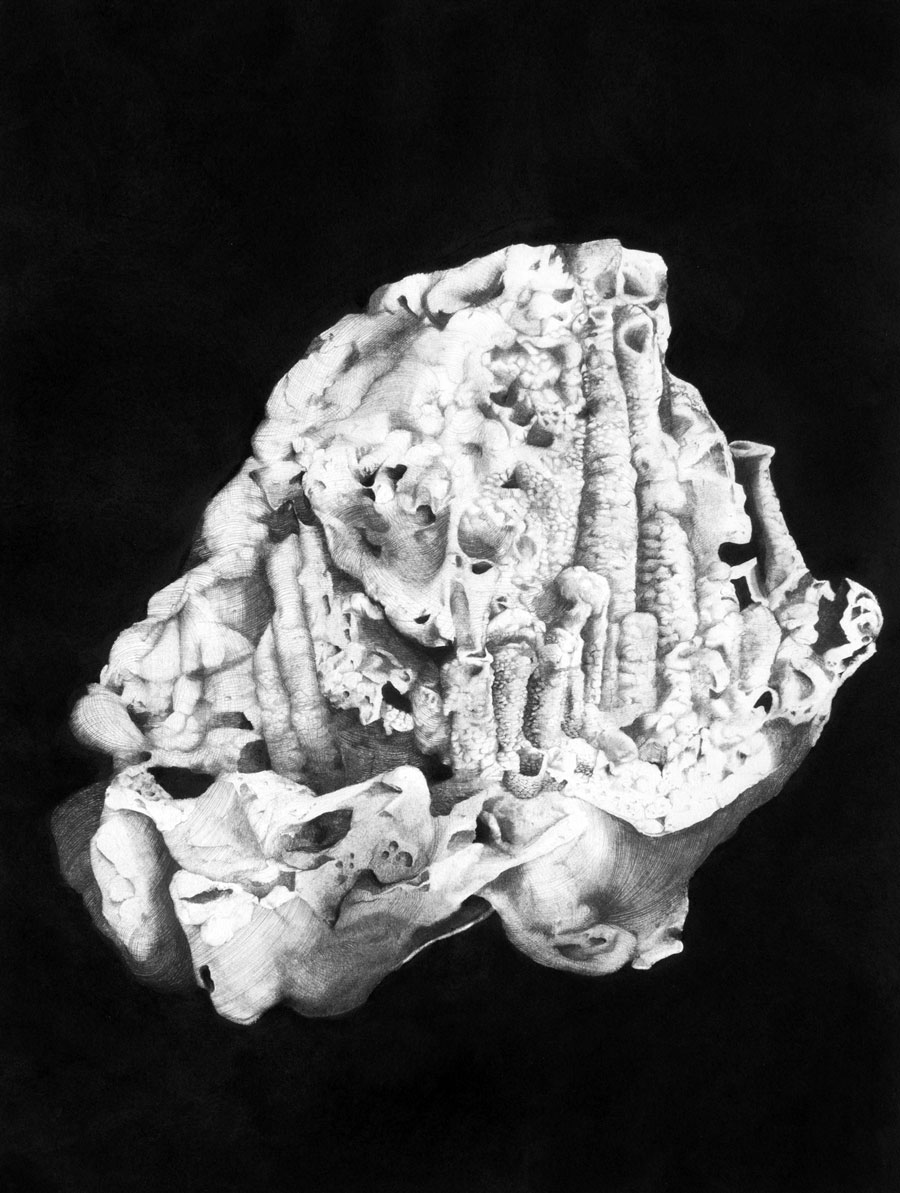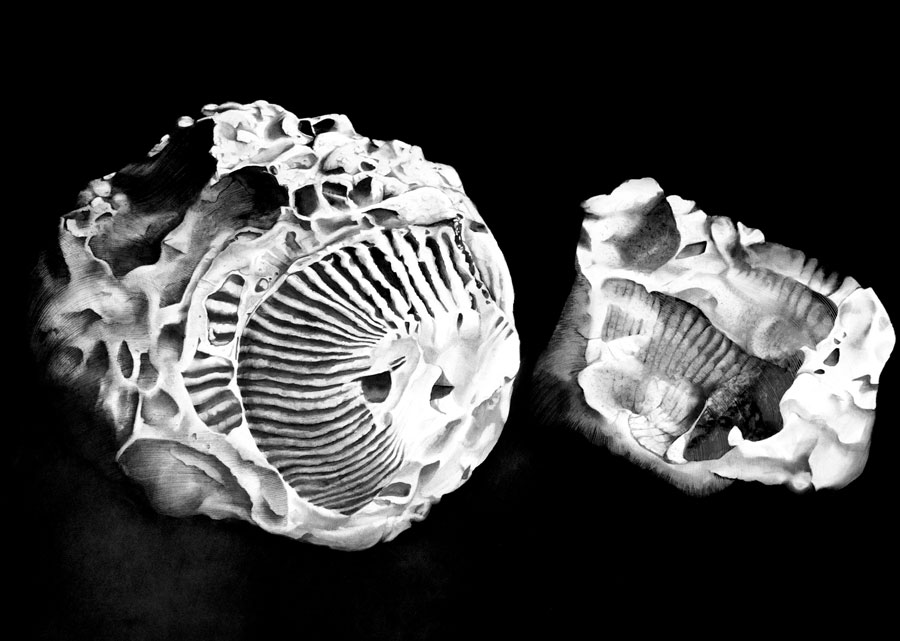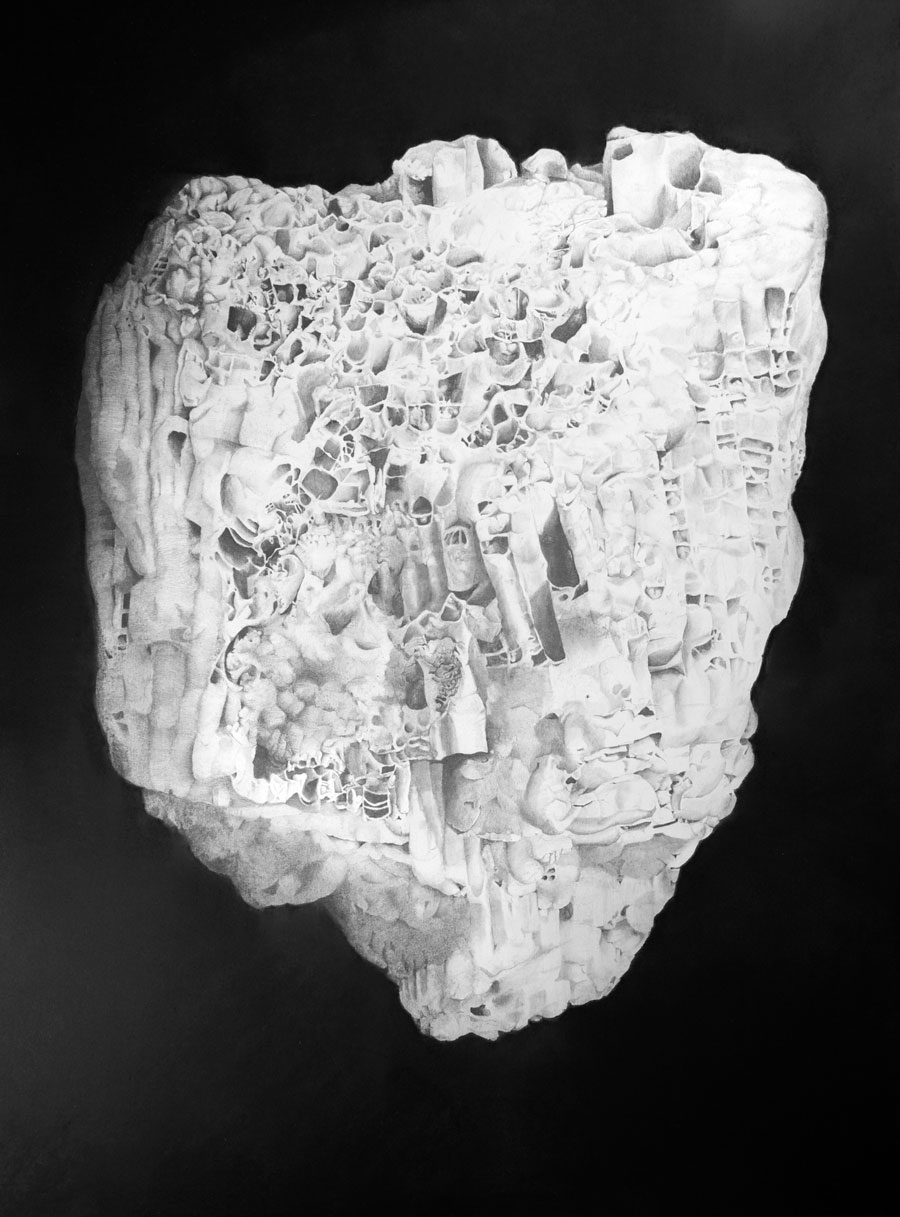Fossils
- Receptaculite
Graphite, charcoal, and collage on paper
50” x 43”
- Linoproductus
Graphite, charcoal and mixed media on paper
36” x 24”
- Crinoid rockslab
Charcoal and graphite on paper
64” x 50”
- Bryozoan A
Graphite and charcoal on paper
36” x 24”
- Archimedes fenestrate bryozoan
Graphite, charcoal and mixed media on paper
22” x 31.5”
- Rugose coral
Graphite and charcoal on paper
38” x 55”
- Dunkleosteus
Graphite and charcoal on paper
38” x 52”
- Bryozoan B
Graphite and charcoal on paper
36” x 24”
- Tabulate coral
Graphite and charcoal on paper
36” x 24”
My home state rock, the honeycombed Petoskey stone (as it turns out a fossilized extinct rugose coral, Hexagonaria percarinata), littered the Great Lakes and my 2nd-grade rock collection. Later in college in Kansas City, Missouri, I bicycled a city of limestone ledges while studying painting and writing. And a bit later, I biked the flat sea of cornfields while studying botanical illustration at the Illinois Natural Survey—where, notably, an Entomologist kindly magnified a pretty bryozoan I brought in, confirming my fondness for fossils. Animal bones, shells, and rocks have become my keys to learning about other histories. Marine coral colonies, trilobites, and bryozoans are still some of my favorite things to draw, and sweeter still to stumble on outdoors. Rough mineralized fossils remind us where we come from and that we will go back to the mud.
![1]()
![2]()
![3]()
![4]()
![5]()
![6]()
![7]()
![8]()
![9]()

















